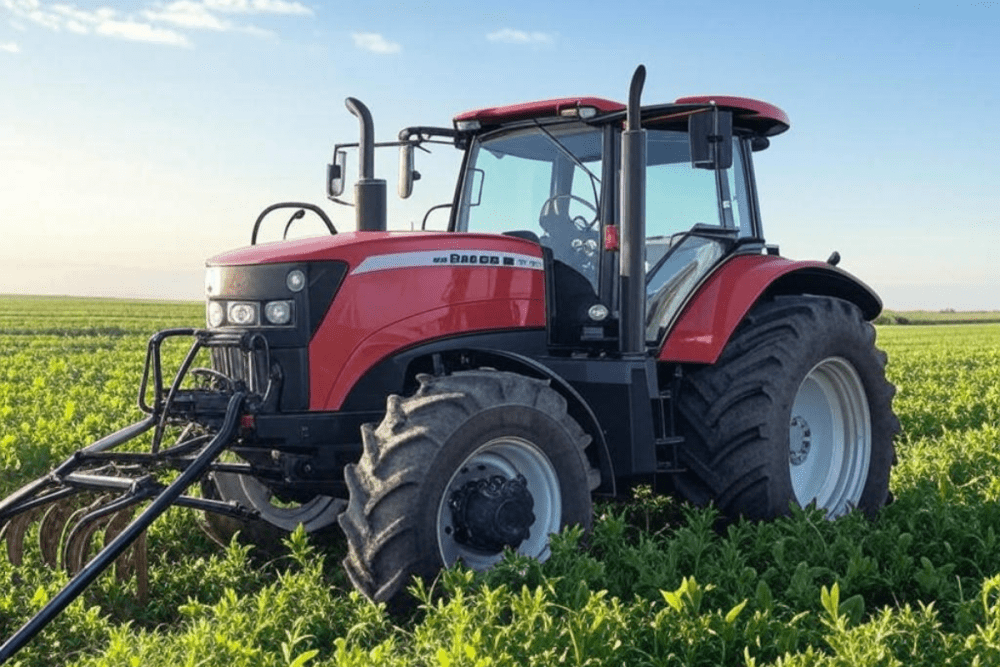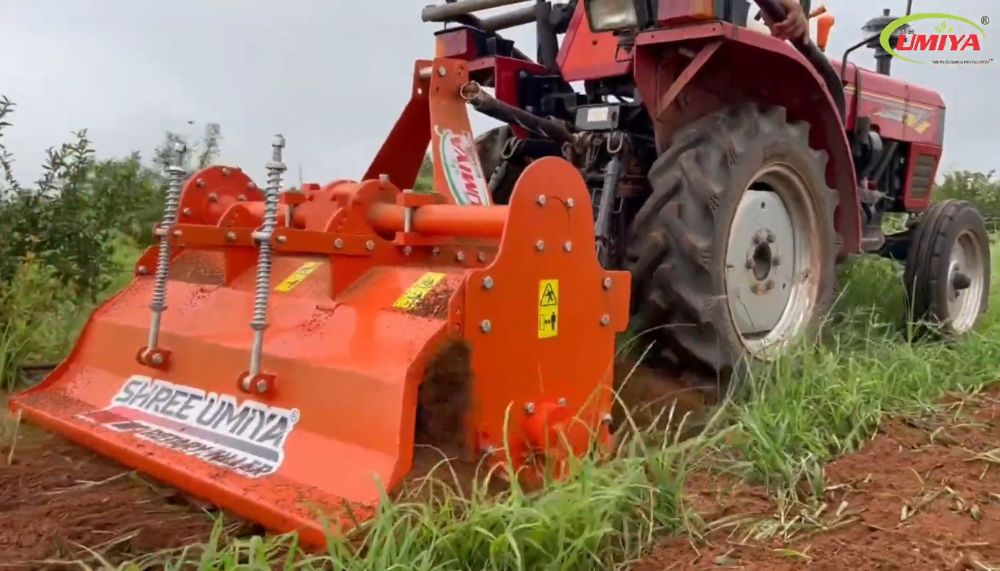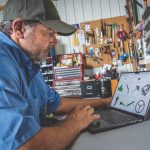Choosing the right tiller for your farm can transform your farming experience, saving you time and effort while boosting productivity. Imagine the satisfaction of watching your crops thrive, all because you selected the perfect tool.
You might feel overwhelmed by the numerous options available, but don’t worry; you’re not alone. Many farmers like you face this challenge. This article will guide you through the essential factors to consider when picking a tiller, ensuring you make the best decision for your farm’s unique needs.
By the end, you’ll know exactly what to look for, and your farm will thank you for it. Dive in to discover how you can simplify your farming tasks and cultivate success.

Types Of Tillers
Choosing the right tiller for your farm is crucial for soil health. It can impact crop productivity. Understanding different types of tillers helps make the best choice.
Rear-tine Tillers
Rear-tine tillers are powerful. They are ideal for large gardens or farms. These tillers work efficiently on tough soil. They have the engine positioned at the front. This design provides better balance. It allows for deeper soil penetration. Rear-tine tillers are often preferred for heavy-duty tasks.
Front-tine Tillers
Front-tine tillers are versatile. They are suitable for medium-sized gardens. They are lighter than rear-tine models. The engine is located above the tines. This offers easier maneuverability. Front-tine tillers are great for light to medium soil work. They are often used for garden maintenance tasks.
Cultivators
Cultivators are compact and lightweight. They are perfect for small gardens. They work well for light soil turning. Cultivators are easy to handle. They are excellent for mixing soil and fertilizers. They are best for preparing seedbeds and maintaining garden beds.
Rotary Tillers
Rotary tillers are efficient and robust. They are designed for heavy-duty farming. They have rotating blades that dig into the soil. Rotary tillers are suitable for breaking new ground. They are often used for large-scale farming operations. They can handle tough terrains with ease.
Electric Tillers
Electric tillers are eco-friendly and quiet. They are ideal for small gardens. They require less maintenance than gas models. Electric tillers are easy to start. They are lightweight and convenient. They are great for light soil work and garden upkeep.
Understanding these types helps in choosing the right tiller. Each offers unique benefits and suits different farming needs.

Assessing Farm Needs
Choosing the right tiller for your farm starts with understanding your specific needs. A proper assessment ensures you select a tool that fits your farming requirements. Not all tillers are the same; each has unique features and benefits. Consider the size of your farm and the type of soil. These factors play a crucial role in your decision-making process.
Understanding Farm Size
The size of your farm determines the tiller’s power and efficiency needs. Larger farms often require more robust machinery to cover extensive areas. Smaller farms might benefit from compact, maneuverable tillers. Consider how much land you need to till regularly.
Soil Type Considerations
Different tillers work better with specific soil types. Rocky or clay soil requires a heavy-duty tiller for effective penetration. Sandy soil may need less power, focusing more on precision. Knowing your soil type helps in selecting the right equipment.
Frequency Of Use
How often you plan to use the tiller impacts your choice. Frequent tilling demands a durable machine with reliable performance. Occasional use may allow for a less expensive option. Consider your farming schedule and crop cycles.
Additional Features
Many tillers come with extra features that enhance usability. Adjustable tilling depth and ease of handling can improve efficiency. Look for features that match your farming style and needs. Ensure the tiller offers the flexibility required for various tasks.
Evaluating Key Features
Choosing the right tiller for your farm is crucial. Evaluating key features ensures you find the perfect fit for your needs. It’s essential to understand what each feature offers. This knowledge helps in making informed decisions. Let’s explore the vital aspects to consider.
Power Source
Tillers come with different power sources. Gas-powered tillers offer more strength. They are suitable for larger areas. Electric tillers are quieter and lighter. Perfect for smaller gardens. Choose based on your farm’s size.
Tine Position
Tine position affects soil penetration. Front-tine tillers are ideal for light tasks. They work well in already loose soil. Rear-tine tillers handle tough jobs better. They can break new ground efficiently. Select based on soil condition.
Width And Depth
Consider the tiller’s width and depth. Wider tillers cover more ground quickly. They save time in bigger fields. Depth control allows precision. Adjust the depth for different crops. This ensures better soil preparation.
Ease Of Use
Easy-to-use tillers make farming enjoyable. Check for adjustable handles. They provide comfort during use. Look for simple controls. This enhances user experience. Consider lightweight models for easier maneuverability.
Durability
Durability is key for long-term use. Strong materials withstand heavy-duty tasks. Stainless steel tines resist rust. Check for robust construction. This ensures the tiller lasts many seasons.
Maintenance
Maintenance affects the tiller’s lifespan. Easy maintenance saves time. Look for accessible parts. Consider models with self-cleaning features. This reduces upkeep effort.

Budget And Maintenance Considerations
Choosing the right tiller for your farm is a crucial decision that impacts both your wallet and the longevity of your equipment. Budget and maintenance considerations are two key factors that can make or break your purchasing decision. You want a tiller that fits your financial limits while ensuring minimal upkeep to keep your farm running smoothly.
Budget Considerations
When thinking about how much to spend on a tiller, start by assessing your farm’s size and your specific needs. A small plot might only require a basic, cost-effective model, while larger farms could benefit from a more robust option. It’s vital to balance your initial outlay with the potential return on investment.
Consider if a brand-new tiller is necessary or if a second-hand model could suffice. Used equipment can offer substantial savings if you’re savvy about inspecting its condition. Make sure you’re not sacrificing too much on quality to save a few bucks.
Think about financing options as well. Some dealers offer payment plans that can ease the immediate financial burden. Weigh the interest rates and terms carefully to ensure it aligns with your long-term financial strategy.
Maintenance Costs
The initial price tag of a tiller is just the beginning. Ongoing maintenance costs can add up, and it’s essential to budget for them. Regular servicing, oil changes, and replacing worn-out parts are typical expenses you should anticipate.
Check the availability and cost of spare parts for the tiller model you’re considering. Some brands might offer cheaper components but require frequent replacements, while others might be more durable but pricier. It’s a balancing act that demands careful consideration.
Don’t underestimate the value of a warranty. A comprehensive warranty can save you from unexpected repair bills, providing peace of mind. It’s worth paying a little extra upfront for a reliable warranty that covers essential repairs.
Personal Experience Insight
A few years ago, a friend of mine purchased a budget-friendly tiller without considering long-term maintenance costs. He soon found himself spending more on repairs than he initially saved. This experience taught me the importance of considering both price and maintenance when choosing a tiller.
What about you? Have you ever bought something on a whim, only to face hidden costs down the road? Being proactive about budgeting and maintenance can prevent such pitfalls and make your farming journey more enjoyable.
Choosing the right tiller is about finding a balance that suits your budget and maintenance capacity. Carefully evaluating these aspects ensures you make a sound investment for your farm’s future.
Conclusion
Choosing the right tiller boosts farm efficiency. Consider size and soil type. Match tiller power with your farm needs. Look for durable materials. Check user reviews for honest insights. Budget wisely without sacrificing quality. Test tiller ease-of-use before buying. Proper maintenance extends tiller life.
Ask experts for advice if unsure. A good tiller saves time and effort. Your farm deserves the best tool for optimal productivity. Happy farming and fruitful harvests await. Make the right choice and watch your farm thrive.



